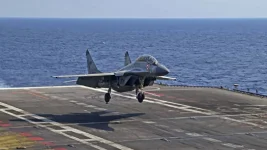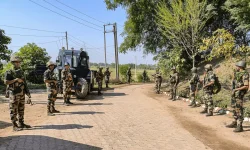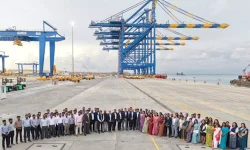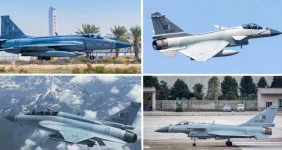- Views: 317
- Replies: 2
The Sri Lanka Air Force (SLAF) has formally decided to modernize its current fleet of Kfir fighter aircraft through a US$49 million agreement with Israel Aerospace Industries (IAI).
This strategic choice involves upgrading five existing jets (models C2, C7, and TC2) and means the rejection of proposals for new aircraft, specifically India's Tejas Mk1A and the Chinese-Pakistani JF-17 Thunder.
The overhaul aims to bring the selected Kfirs close to the advanced 'Block 60' standard, featuring 4+ generation avionics.
The Kfir, an all-weather, multirole combat aircraft developed by Israel based on the French Dassault Mirage 5 design, has been a significant part of Sri Lanka's air defence capabilities since the 1990s.
Equipped with Israeli avionics and a version of the General Electric J79 engine produced in Israel, these aircraft were crucial during Sri Lanka's 26-year civil conflict, executing precision strikes against insurgent forces. The SLAF's decision highlights the value placed on the Kfir's proven combat record and sturdy design, despite its age.
According to the agreement with IAI, the upgrade programme will replace the Kfirs' existing avionics with modern 4+ generation systems. This foundational change is designed to allow for the future integration of sophisticated radar, sensors, communication equipment, and advanced pilot helmets.
The work, which includes training local Sri Lankan personnel, will be conducted within Sri Lanka and is projected to extend the operational lifespan of these fighter jets by approximately 15 years, preserving the nation's investment and operational knowledge.
This decision means Sri Lanka has passed over offers for newer aircraft. India had proposed its domestically developed Tejas Mk1A light combat aircraft, manufactured by Hindustan Aeronautics Limited (HAL). Concurrently, China and Pakistan jointly offered the JF-17 Thunder multirole fighter, produced by the Pakistan Aeronautical Complex and Chengdu Aircraft Corporation.
While both alternatives presented modern capabilities at competitive prices, observations within defence circles suggest Sri Lanka's choice might also stem from a desire to continue its established defence relationship with Israel and potentially avoid greater reliance on other regional powers or technologies associated with China and Pakistan.
Once upgraded, the Kfirs, approaching the Block 60 standard, will maintain their high-speed performance, capable of reaching Mach 2, while benefiting from significantly improved situational awareness and combat effectiveness.
The US$49 million deal also encompasses a spares package for sustained operation over the extended service life.
Justifying the decision, SLAF Commander Air Marshal Sudarshana Pathirana previously stated that refurbishing the existing Kfirs represented a more financially viable path than acquiring new fighters, which could cost upwards of US$40 million per aircraft, thereby protecting the nation's prior investments.
The move addresses the SLAF's need to maintain a credible air defence posture, a lesson learned after a decline in air power readiness following the end of the civil war in 2009.
The original fleet of 15 Kfirs has been reduced to the current five operational aircraft due to combat losses and accidents over the years, including incidents in 2001 and 2011.
The upgrade project, which commenced recently, is intended to bring the No. 10 Fighter Squadron back to operational strength, with the first upgraded jet anticipated to be ready within two years.
For Israel Aerospace Industries, this contract underscores the continued relevance and market appeal of the Kfir platform. Yossi Melamed, head of IAI's Aviation Group, described the deal as a foundation for potential future enhancements, possibly towards the Kfir New Generation (KNG) configuration.
The successful modernization of Colombia's Kfir fleet, which notably demonstrated strong performance against more modern aircraft during international military exercises like the US Red Flag, likely bolstered Sri Lanka's confidence in pursuing this upgrade path.








